Why Rey Is The First Feminist Icon In STAR WARS
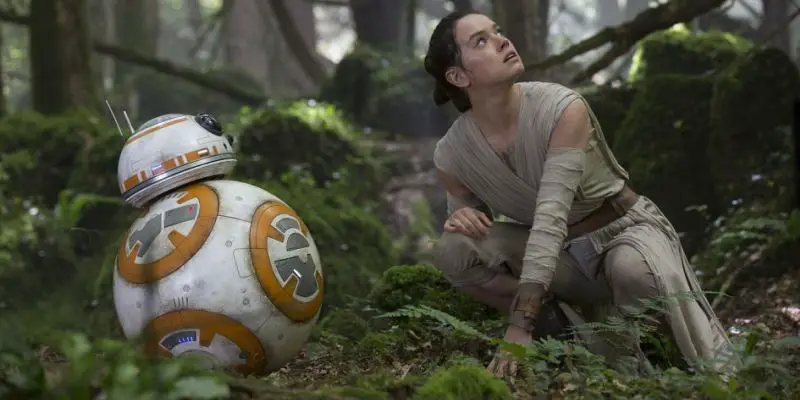
Alex is a film addict, TV aficionado, and book lover.…
Warning: This article contains spoilers for Star Wars: The Force Awakens. Read at your own risk.
Iconography and Star Wars go hand in hand. Darth Vader’s mask, Han Solo’s vest, the glowing cross of two lightsabers, all are images that are instantly recognizable around the world. Causes clamor to find a champion within this hallowed universe, hoping for a character that easily represents their point of view, but Star Wars has never been an inclusive world. Its sea of straight, white men forces many groups to cling to representations that aren’t quite enough.
Feminism is no exception to this trend, with debate raging for decades over whether its handful of female characters can really be considered feminist. They hew so close to the line that the finer points of what equal representation in film really means becomes imperative to define, and the many people who love the Star Wars universe (myself included) have proven time and again willing to forgive things they shouldn’t have to forgive in order to find a well-rounded portrait of women.
And then came Rey in The Force Awakens, a character so fully realized and utilized that she’s almost more than we ever thought to ask for. With her definitive step into the limelight, all other female characters in the universe can be examined without the need to stretch, without the desire to forgive, and can be evaluated strictly as they were presented in each of the Star Wars films.
The Problem with Padmé
The prequel trilogy, consisting of The Phantom Menace, Attack of the Clones, and Revenge of the Sith, is the first trilogy chronologically in the Star Wars saga but the second set of films released. Covering Anakin Skywalker’s turn to the dark side, it featured more female characters per capita than fans had ever seen before, but only one had a speaking role in all three films: Padmé Amidala.
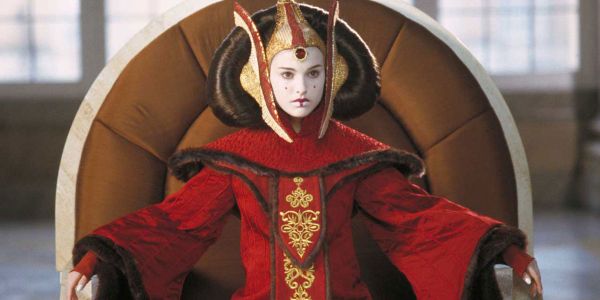
Padmé spends the trilogy in a series of elected political positions, roles that are continuously used to show her deft understanding of political maneuvering. When she and Anakin fall in love, Padmé resists the relationship, pointing out that their respective careers would be hampered if they pursued their feelings. That’s a female character with agency outside of a man, right? Let’s just chalk her up as a win and move on? Well, not so fast.
Despite showing a strong backbone in tricky political situations and proving capable in gunfights and monster battles, Padmé is continuously dismissed by the men around her and proves to be nothing but a pawn in the trilogy’s plot.
The first film has her trailing Qui-Gon Jinn for over half of the runtime, who ignores her wishes with the flippant remark that she’s young and naïve. That he unknowingly says this to her face is a small victory, but her eventual assertion in the battle to free her people on Naboo doesn’t leave her fellow characters or the screenwriters with any lingering respect.
The second film has her hiding out under the direction of Obi-Wan and Anakin, the latter of which spend most of the film smarmily hitting on her while she dubiously sends mixed messages. The final film has her married and pregnant, mostly hanging out in living quarters and fretting over Anakin. All that wonderful diplomacy she so dearly cares about is rarely seen, although she does make one shrewd and legendary remark when it all crumbles before her.
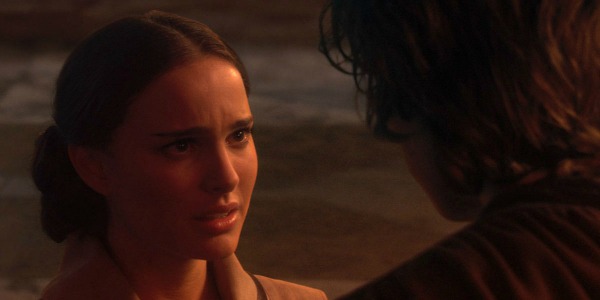
Now, a lifelong politician should care about the fall of diplomacy, but Padmé’s true function, and a function is all she turns out to be, overwhelms her character’s agency throughout the final film. Her pregnancy occurs to inspire fear in Anakin, which Yoda constantly warns us is a path to the dark side. When Anakin eventually does turns, she loses the will to live, puttering out in a bewildering scene where she dies during an uncomplicated childbirth.
Why the fight to regain democracy or raise her children isn’t enough to keep her going is never explained, and her inexplicable and incongruous death cements her as the least autonomous of the three female leads.
The Illusion of Leia
Here’s where the fight really begins. Leia has long been held up as baby’s first feminist, the snarky princess who stood up to Darth Vader, led a rebellion, and put the arrogant Han Solo in his place during the original trilogy. A strong woman, no doubt, but the problem is that this describes her from the first moment she appears in A New Hope to her final scene in Return of the Jedi.
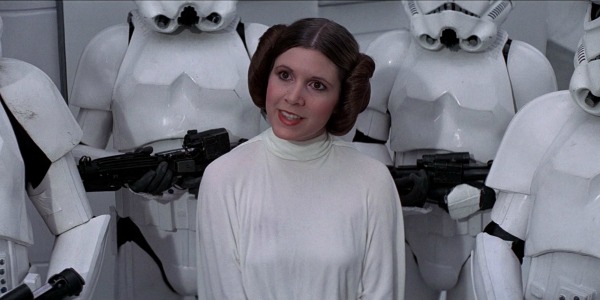
Don’t believe me? Let’s take a look at that infamous thorn in feminist Leia’s side, her captivity to Jabba the Hut in Return of the Jedi. The criticism normally lies on her skimpy bikini, but that overlooks the very telling way that her character is used in these scenes. She is a prisoner along with Han, Chewie, and Luke, and when Luke kicks off their breakout, she doesn’t hesitate in whipping around and strangling Jabba with the very chain that’s holding her captive. It’s a striking subversion of the damsel in distress trope, and on its own is a pretty awesome moment to the average feminist.
But remember what happened when Han and Luke saved her from Imperial captivity in A New Hope? They successfully got her out of the cell but got pinned down by Stormtroopers before even leaving the cell block. She’s the one who came up with and led the improvised exit down the garbage chute, already being used this early in the series to subvert the damsel in distress trope.
Nearly two full films have occurred between these sequences, but Leia is left playing the same role. Han and Luke, on the other hand, have undergone massive changes in character and react quite different in each situation. Han has learned how to become a member of the group, to stick your neck out for someone without the need for a reward (remember, he dangles from a skiff to save Lando from the sarlacc). Luke has become a competent leader, enacting and improvising the escape plan without getting in over his head and needing assistance from Han or Leia. The damsel in distress subversion is still all that Leia has.
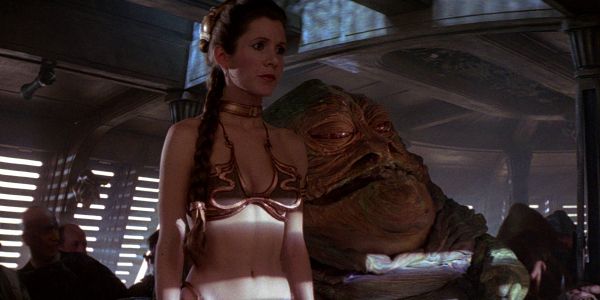
It’s a small example, but it’s indicative of how Han and Luke go through character arcs that Leia is not capable of going on. She is the embodiment of the strong female character stereotype throughout the trilogy, and while that’s an admirable attempt at portraying women in a positive light, it’s a stereotype that pigeonholes her nonetheless.
Without the space to grow and change, Leia’s use in the plot is static, and she’s doomed to repeat the same roles ad nauseam while the men around her push the trilogy forward. So yes, Leia is strong, but she’s not given the same narrative weight as her male counterparts.
The Realization of Rey
The Force Awakens kicks off the sequel trilogy and sets up two new characters for the series to follow: Finn and Rey. Both are introduced with their faces covered, he in a stormtrooper uniform and she in scavenging garb, and their unmasking to reveal a black man and a young woman is the first indication that the series is knowingly bringing in two groups that have felt shortchanged by the existing saga.
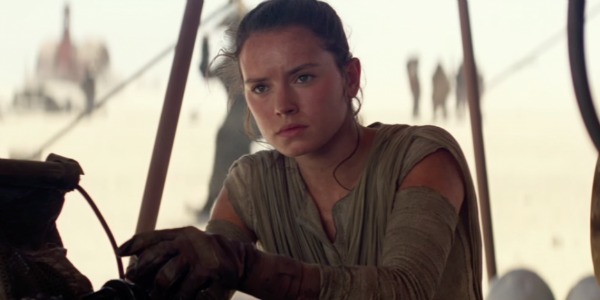
Rey, it is quickly established, has been scavenging parts from wrecked ships for years, waiting for someone significant to her to return to her home planet. She’s good at the things she knows but naïve about everything else, traits that lead her to take on situations she can’t quite handle. This should sound familiar, because it’s roughly the same rudimentary set-up as Luke in A New Hope.
Like Luke, the first film in her trilogy sucks her into a journey she doesn’t fully understand. Sometimes she reacts with great confidence, fixing the Falcon and running headfirst into battles to save her friends. Other times she falters, questioning whether she can handle the responsibilities being placed on her. It’s a complexity of reactions not seen in either Padmé or Leia, and remarkably her failures don’t lessen her in the eyes of the characters helping her along. In fact, her potential is acknowledged by Han, who confirms that she can take care of herself and even offers her a place on his crew.
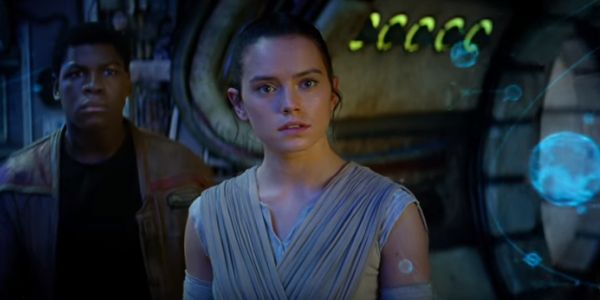
Finn’s journey is one of similar uncertainty, and their pairing works because they are two characters who change in nearly equal measures. They stick together because they begin so utterly in over their heads, and when the journey separates them, he must confront his damaged upbringing with the First Order while she must accept her future as a potential Jedi. Each character’s individual arc is what leads them back together, and their final confrontation with Kylo Ren is a symbolic victory for both characters.
The fact that these independent arcs are given similar weight and that Rey is allowed to both succeed and fail without condemnation is what makes her a true equal to the many male characters that surround and have preceded her in the Star Wars saga. It’s perhaps a bit sad that this was realized by lifting the rudiments of the protagonist arc from A New Hope and replacing the he with a she, but if what feminists are asking for is equal treatment for female characters, then there are few other ways to accomplish this goal so comprehensively.
What the Debate Says About Feminism
The difficulty in identifying a feminist icon from the female characters in Star Wars is indicative of how complicated and misunderstood feminist representation in film really is. The definition may be about equality, but there are so many underlying desires, from the yearning for a strong female character to the need for representation of problems that are uniquely feminine, that no one character can represent everything that the movement wants to see. All a film can really do is tell its own story and make women an integral and equal part of that plot.
This is what The Force Awakens has done with Rey, and what makes it so hard to identify how it accomplished this. What makes her feminist is not what easily pops out, like when she throws away Finn’s hand as they flee the First Order. No, it’s the smaller moments, like when she gleefully exclaims that she’s bypassed the Falcon’s fuel compressor, that reveal her to be a competent young woman with a few thing left to learn. You know, the kind of character you can build a trilogy around.
Do you think Rey is a feminist icon? How do you feel about the equally progressive use of Finn? Let me know in the comments!
Does content like this matter to you?
Become a Member and support film journalism. Unlock access to all of Film Inquiry`s great articles. Join a community of like-minded readers who are passionate about cinema - get access to our private members Network, give back to independent filmmakers, and more.
Alex is a film addict, TV aficionado, and book lover. He's perfecting his cat dad energy.













